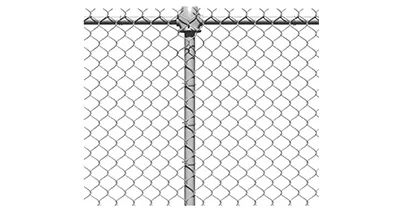-
 Phone:
Phone: -
 Email:
Email:

Innovative Security Solutions with Barbed Wire and Chain Link Fencing Systems
Barbed Wire and Chain Link Fencing A Security Paradox
In a world where security is paramount, understanding the different fencing options available can reveal a lot about how we perceive safety and privacy. Among the various fencing solutions, barbed wire and chain link fencing stand out due to their widespread use and distinct characteristics. Together, they form a unique juxtaposition, representing both deterrence and protection.
The Historical Context
The invention of barbed wire in the late 19th century revolutionized fencing practices around the globe. Initially designed for agricultural use, it quickly gained popularity for its utility in enclosing livestock and protecting crops from wandering animals. Barbed wire consisted of twisted strands with sharp edges or barbs, making it an effective barrier against intruders, both animal and human. Its effectiveness and low cost made it a staple in rural America and beyond.
Chain link fencing, on the other hand, emerged later, offering a different type of security. Made from woven steel wire forming a diamond pattern, chain link offers visibility, which barbed wire does not. This visibility can play a crucial role in environments where oversight is vital—such as schools, public parks, and industrial sites. Unlike barbed wire, which lends an aura of imprisonment, chain link provides a more open environment, allowing for interaction while still maintaining a level of security.
Applications and Advantages
Barbed wire is frequently found in high-security areas such as military bases, prisons, and borders. Its intimidating appearance acts as a psychological deterrent against trespassers. When attached to the top of fences, it creates a formidable barrier, discouraging climbing and invasions.
Chain link fencing, while not as intimidating, has its own set of advantages. It is generally easier to install, requires less maintenance, and is more versatile. Chain link can be topped off with barbed wire for added security, blending the two fencing styles into a single unit. This combination makes it a popular choice for commercial properties and industrial sites where both visibility and security are priorities.
barbed wire chain link

Additionally, chain link fences come in a variety of heights, gauges, and coatings, allowing for customization based on specific needs. While barbed wire may project a harsh image, chain link can be coated with PVC or vinyl in different colors to match the aesthetic requirements of a property.
The Security Debate
Using barbed wire raises ethical questions regarding safety and humanitarian considerations. While it effectively deters trespassers, it can also pose significant risks to unintended victims, including children and animals. Critics argue that the harshness of barbed wire creates a divide, reinforcing an us versus them mentality and fostering an atmosphere of fear and hostility.
Conversely, chain link fencing is viewed as a more humane option. Its openness encourages community and interaction, especially in public spaces. However, chain link doesn't offer the same level of security as barbed wire on its own; thus, concerns regarding its effectiveness can arise, particularly in areas prone to crime.
Modern Innovations
In recent years, both barbed wire and chain link fencing have seen technological advancements. For instance, electrified barbed wire systems have been developed, further enhancing security around sensitive areas. Similarly, chain link fences can now incorporate additional security features, such as intrusion detection systems and smart technology, providing real-time alerts for potential breaches.
Conclusion
The choice between barbed wire and chain link fencing ultimately depends on the specific needs and values of the property owner. Barbed wire presents a stark, effective barrier against intruders, while chain link offers a more open and community-friendly approach. As society evolves, so too will our methods of security. Striking a balance between protection and accessibility remains the ongoing challenge in the ever-important conversation surrounding safety in our neighborhoods, schools, and workplaces. Understanding the implications of each fencing style is essential in creating spaces that are both secure and inviting.
-
Wire Mesh for Every Need: A Practical SolutionNewsJul.25,2025
-
Steel Fences: Durable, Secure, and Stylish OptionsNewsJul.25,2025
-
Roll Top Fencing: A Smart Solution for Safety and SecurityNewsJul.25,2025
-
Cattle Farm Fencing Solutions for Maximum SecurityNewsJul.25,2025
-
Affordable Iron Binding Wire SolutionsNewsJul.25,2025
-
Affordable Galvanized Wire SolutionsNewsJul.25,2025
-
Wire Hanger Recycling IdeasNewsJul.25,2025








